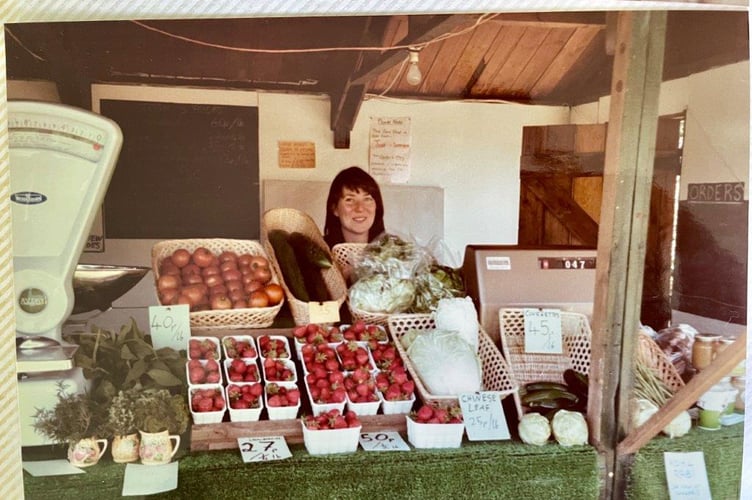There are few things more delicious than a fresh strawberry, especially one straight off the plant.
It wasn’t long ago they were a seasonal treat and finding them in a greengrocers or a supermarket before spring was rare.
Things have changed and now, even in deepest winter, you can find strawberries on our shelves. The archetypal British berry has been usurped by varieties flown in from Spain, Morocco or further afield to appease the Western appetite for any food, any time of the year.
But for those who believe in seasonality, and who remember the halcyon summer days of Pick Your Own, there are places where this much-loved and cherished pastime still endures.
Tucked away off the side of the A272 between Petersfield and Midhurst is one such place as Durleighmarsh Farm has been a must-visit for pickers for five decades.
The business has grown considerably since a couple of acres of strawberry plants were sown as an experiment in 1975 on a field on the other side of the A272.
Before that the farm sold its own Jersey cream and homegrown potatoes from a little green shed that opened seasonally, with shoppers paying through an honesty box.
That shed was superseded in 1990 by the log cabin that’s now their shop, while the farm has grown in size and popularity with the site expanding to more than 20 acres.
The farm offers a cornucopia of fruit and PYO options with other berry fruits like raspberries being grown onsite. But strawberries have always been the main draw and the joy of finding a big and juicy one, missed and hidden away under a leaf, remains a simple but undiminished pleasure.
“I think PYO has had a resurgence but over the years the reasons for picking have changed,” said landlord Angela Henslow.
“When we first started people came with buckets and washing up bowls and picked masses to take home and freeze.
“Now it’s more of an experience. Some people come out with kids and they linger for a long time and maybe don’t pick quite so much, but it gives them a chance to be outside and see where fruit and vegetables come from.”
She added: “Since lockdown it’s definitely been more popular.

“One of the nice things about PYO is that you can grow them for flavour and they don’t have to go straight into a refrigerator or storage like you have to do for supermarkets. The taste is just so much better and fresher.”
The PYO experience has changed over the last few decades along with the industry and it’s not the back-breaking experience it sometimes was. Readers of a certain age will no doubt remember crouching down and rummaging through plants, trying to find a berry that someone may have missed.
Although you will still find some strawberry plants in rows on the ground at Durleighmarsh, most of the current crop can be found in elevated growbags, held off the ground by posts and tensile wire. You’ll find this set up at most commercial strawberry farms, although few will be outdoors and most will be inside polytunnels or greenhouses.
The growbags are fed by irrigation drippers so it’s easier to control moisture and water levels, although being at the mercy of the elements also means they’re rich pickings for birds. One benefit of being outdoors is that some diseases like mildew aren’t prevalent like they can be in polytunnels.
While the days of crawling around on straw have gone, the change in system does have its pitfalls when it comes to the great British public. Because they’re now easier to pick, some PYO-ners get a little too enthusiastic.
Sometimes when it’s busy visitors will over-pick and take off strawberries which are much too underripe, forcing the team to temporarily suspend picking to allow the crop to recover.

It’s therefore always recommended to check ahead during sunnier periods to avoid disappointment after a journey.
Angela added: “When you come here, you can bring your own punnet or pick one from the shop and it will be weighed.
“The honesty policy is part of the experience but when they just eat them and don’t put any in the punnet that’s when it gets a little frustrating.
“We’ve had people come down from London with extended family and we’ve found them sitting on a blanket between the rows eating strawberries and cream.”
Durleighmarsh Farm has always been a family enterprise but Angela and her husband no longer tend the crops like they used to.
She relinquished the running of the farm shop in 1995 after throwing herself into asparagus growing “in a big way” with a Bulgarian couple called Vladimir and Tanya now overseeing crop control. They’re a very busy pair and it’s a balancing act given the scale of the site and the variety of fruit and vegetables grown.
The move into asparagus growing has been very successful and Durleighmarsh is renowned for the seasonal crop, which grows at breakneck speed in good conditions.
Angela added: “We knew it was going to be a big thing and we had 186 acres of asparagus at one time.
“When conditions are good it can grow four inches a day so that used to be a nightmare if we didn’t have the numbers.”
The original field is also in use and the team are growing “bits and pieces” on the plot to sell in the thriving farm shop.
The site and operation has changed enormously over the last 45 years as the dairy herd and combine harvester which used to be frequent sights have long gone.
But the appeal of freshly grown strawberries still endures, and the PYO fields and farm shop remains at the heart of the enterprise.
You could say this farm is the pick – or the cream – of the Rother Valley.
For more information look for Durleighmarsh Farm Shop on Facebook or Instagram or visit https://www.durleighmarshfarmshop.co.uk/






